Rachel S. Cordasco's Blog, page 13
July 26, 2022
SFT at the Complete Review

Check out Michael Orthofer’s review of Out of This World: Speculative Fiction in Translation from the Cold War to the New Millennium at the Complete Review!
Excerpt: “Out of This World is a useful reference work for any reader, and surely essential for anyone interested in speculative fiction originally written in other languages. It also serves as a very good introduction to the field — and readers eager to expand their reading of speculative fiction will find this to be a great guide and resource for finding new reading.”
July 6, 2022
Malpertuis by Jean Ray
Daniel Haeusser reviews short works of SFT that appear both online and in print. He is an Assistant Professor in the Biology Department at Canisius College, where he teaches microbiology and leads student research projects with bacteria and bacteriophage. He’s also an associate blogger with the American Society for Microbiology’s popular Small Things Considered. Daniel reads broadly in English and French, and his book reviews can be found at Reading1000Lives or Skiffy & Fanty. You can also connect with him on Goodreads or Twitter.
 translated by Iain White, Edited by Scott Nicolay
translated by Iain White, Edited by Scott Nicolay
Wakefield Press – September 2021
978-1-939663-70-2– Paperback – 256 pages
Regular followers of SF in Translation may recall my review of the first two comprehensive releases of Jean Ray’s short fiction by the phenomenal Wakefield Press: Whiskey Tales and Cruise of Shadows. These were soon followed by two further volumes in 2020: The Grand Nocturnal and Circles of Dread, which I still have to get and read myself. All translated and annotated by the talented and dedicated Scott Nicolay, the first two volumes that I have had a chance to read introduced me to the atmospheric, haunting prose of this quintessential author of the weird, the so-called Belgian Poe, Jean Ray.
In the introductions for those previous collections, and the notes for some stories within, Nicolay would make praiseful reference to Ray’s chef-d’œuvre, the 1943 novel Malpertuis. These brief descriptions convinced me I’d have to read it. The combination of classic Gothic Horror with the Weird subgenre, in a unique form of the haunted house novel, sounded perfectly tuned to my interests. Even with a foundation of mythological familiarity that was largely lost on me, Malpertuis succeeded wildly in entertaining and impressing.
The narrative core of the novel comes from the diary of Jean-Jacques Grandsire, a naïve young man who recounts his hauntingly bizarre experiences within the dilapidated old mansion called Malpertuis in the secluded streets of Ghent. His recorded story begins in that home at the deathbed of his wealthy Uncle Cassave. Gathering alongside Jean-Jacques to await the demise of Cassave are a motley collection of deviously wary relatives and acquaintances, many among them exceeding the eccentricities of the elder Cassave.
At the opposite end of the personality spectrum to Jean-Jacques is his sister Nancy, a fiery and cunning spirit who won’t abide the antics of the others. There is Philarethe, an obsessive taxidermist who is cousin to Cassave. The Dideloos are uncle and aunt to Jean-Jacques and Nancy. The lascivious eyes of Charles Dideloo linger upon near all, relation or not, excepting his hypochondriac wife Sylvie. With the Dideloos is their foster daughter, Euryale, a young girl with stunning red hair and deep green eyes. Disliked by most are the Cormelon sisters: Eleonore, Rosalie, and Alice, perhaps come to Cassave’s dying side in pure opportunistic momentum. Finally, there is Dr. Sambucque, Cassave’s friend, servant, and physician.
Upon the death of Uncle Cassave, a man named Eisengott arrives to witness the reading of Cassave’s will. The entirety of Cassave’s fortune is left to his collection of relatives, upon the stipulation that they live together within the walls and labyrinthine corridors of Malpertuis for the years to come. However, many those may be. Moving out of the house will result in forfeiture of the fortune. The remaining survivor(s) will be left with the entirety of the inheritance. And if the final two survivors happen to be man and woman, they will need to be married. The normally restrained Euryale flirtatiously whispers to Jean-Jacques a prediction that it shall be them.
With these relatives in the house are others, servants of Malperitus, and formerly of Cassave: domestics Mr. and Mrs. Griboin who have a golem-like hulk of a man who helps them clean, known only as Tchiek. Also haunting the corridors of the house is the mad Lampernisse, the former manager of a paint store that sits adjacent (connected) to Malpertuis. Lampernisse creeps out of the dark corners of the mansion, shrieking of light and colors that vanish from his grasp, and a presence that goes among rooms and corridors snuffing out candles. With Lampernisse’s mind lost, management of the paint shop has fallen to a handsome young man named Mathias Krook.
One can see already there is a complexity to Malpertuis in its cast of characters and their mysterious quirks. The pages of Jean-Jacques’ diary continue in linear narrative from the death of Cassave and reading of the will to a passage of time that increases instances of oddity, clandestine affairs, creeping dread, and outright horror. This culminates with a Christmas dinner where the proverbial shit hits the fan, with an explosion of horror and inexplicable mysteries that seem to break down the walls of reality and perception.
The complexity and riddles only increase, into what blurbs for the novel typically describe as a ‘puzzle box’ of a narrative structure for Ray’s novel. Malpertuis does not begin with Jean-Jacques’ diary. Instead, in a manner familiar to fiction from that era of time (and decades prior) the main story is framed by separate narratives, nested. Even Ray’s short stories often took this form.
For instance, a group of sailors gather in a dockside bar, and one begins to tell a tale about a discovery from the depths of the sea, a captain’s log that has survived the briny waters. The sailor then relates the story those pages contain. This may tell the tale of a man who discovers a book in a monastery that is cursed. And the pages of that cursed tome relate a tale of… And so on and so forth, a recursive nesting doll.
With Malpertuis, Jean Ray does similar, but then also turns the ‘doll’ into a recursive puzzle box, a structure where details are gradually revealed among events that seem to make no rational sense – at first. It’s an exquisitely crafted novel, that readers can then enjoy reading again for fresh discoveries and insights. Ray begins the novel with a story from an unnamed, present-day narrator. One interpretation could be that this character is Ray’s image himself, for roguish similarities abound. This narrator explains that he has just robbed the Convent of the White Penitents. Among the spoils of this crime are manuscripts including Jean-Jacques Grandsire’s diary, the related writings of one Doucedame the Elder, and notes related to these by Father Euchere, Dom of the convent that the unnamed thief has robbed.
Following that introduction, the unnamed thief inserts a first text by Doucedame the Elder, relating exploits on the sea that will hold a familiar sound for any familiar with Jean Ray’s short fiction. Indeed, this part of the novel could exist as a short story unto itself. The story relates a monumental discovery on a Greek Island, and another kind of theft that will only become clear later.
Jean-Jacque’s diary, the bulk of the novel, then finally begins – as discussed above. With this we discover some links with the previous text by Doucedame the Elder. His offspring, Doucedame the Younger, served as a mentor for Jean-Jacques, and that man may still be visiting Malpertuis after Cassave’s death. Additionally, with Doucedame the Elder on the voyage that sets events of the novel into motion is Anselme Grandsire, grandfather of Jean-Jacques and Nancy.
The basic premise of Malpertuis, the purpose behind the voyage, who Cassave is and why he has set up this situation upon his death, the true nature of all these odd characters… These mysteries only become clear as the novel enters into its final pages, after the conclusion of Jean-Jacques’ diary, with further words from Doucedame the Elder and the conclusions reached by Father Euchere when taking it all in. The novel then concludes with a book-ended return to the present-day narrative of the unnamed thief, who travels back to the doors of ancient Malpertuis itself to discover what remains.
Careful and astute readers could possibly figure out the basic premise and mysteries of Malpertuis before all is revealed at its conclusion. One could also just look up information online, or watch the film adaptation of the novel with Orson Welles. But, where’s the fun in that? I admit to looking up details, however, after completing the novel.
Full appreciation of the premise of Malpertuis and its cast of characters demands a good deal of familiarity with Greek mythology. I don’t have that. In fact, I tend to dislike mythology because of its enormous complexity, contradictions, and seemingly endless names, pseudonyms, and personifications. It’s always seemed to me to be a giant entangled mess, the literary or oral tradition equivalent of Immunology. What is wonderful about Malpertuis is that Ray takes that mess of complexity and puts it into a nice well-organized structure, a symbolic haunted house and novel of nested narratives. His perhaps makes the mythology make a bit more sense to me, for all its insanity and weirdness.
Even without the familiarity with Greek myth/characters, I found Malpertuis a fantastically engaging and well-paced read that barely shows its age. It’s a post-modern novel that not only ‘reinvents’ Gothic, haunted house traditions, but also brings elements of quantum realities and multiverses into play in interesting ways, building on cutting edge science around the time of its composition.
[As an aside, the name Malpertuis is also a reference that was new to me. It comes from the name of the labyrinthine castle of sly Reynard the fox, a character from old French (or nearby) tradition. Notes on this by White also revealed to me that renard(e), the French word for fox comes from this character – not the reverse as I assumed. Apparently the oral/literary tradition overtook the original term for ‘fox’ in the French language. See the wonders that literature in translation can reveal?!]
This version of Malpertuis from Wakefield Press uses an existing, respected translation by Iain White, along with his introduction and notes. However, that translation has been updated (edited) here by Scott Nicolay, who translated the short fiction by Ray in the earlier releases. Nicolay also offers a useful afterward here to wrap all up. His translation of Ray’s only other novel, The City of Unspeakable Fear, is forthcoming from Wakefield Press, so Ray fans can rejoice at getting still more.
The pandemic delayed release of Malpertuis. But that and other global calamities (and their after-effects on global supply chains) have also disrupted Wakefield and other small presses. I was pleased to see that after a long unexpected publishing hiatus that they have their first title due for release: The Central Laboratory, verse poetry by Max Jacob, translated by Alexander Dickow. It has both the translation and original French text facing, a concept I applaud. Poetry is not my thing, but if it’s yours, I’d encourage you to check it out, as well as their larger catalog of translation, particularly The School of the Strange, their series of Belgian and French weird fantasy.
July 2, 2022
Out This Month: July
“The Strange Girl” by Xiu Xinyu, translated from the Chinese by Emily Jin (Clarkesworld, July 1).
“The Tin Pilot” by K. A. Teryna, translated from the Russian by Alex Shvartsman (Asimov’s, July/August).
ANTHOLOGIES
 New Voices in Chinese Science Fiction
, eds. Neil Clarke, Xia Jia, Regina Kanyu Wang (Clarkesworld Books, July 7).
New Voices in Chinese Science Fiction
, eds. Neil Clarke, Xia Jia, Regina Kanyu Wang (Clarkesworld Books, July 7).
“Science fiction is international in scope, but many works are often unavailable to readers because of language barriers or the costs involved in transcending them. In the eleven years I’ve been publishing science fiction works from China, I’ve had the privilege of working with and featuring stories by both of my co-editors, as well as dozens of other authors. Anthologies and projects like this one are an editor’s joy. We’ve been given the opportunity to shine a light on eight Chinese authors that have not been previously published (at that time) in English. Authors you should know about. New voices, or at least new to you.” —Neil Clarke
REVIEWS
June 27, 2022
Out of the Cage by Fernanda García Lao
Daniel Haeusser reviews short works of SFT that appear both online and in print. He is an Assistant Professor in the Biology Department at Canisius College, where he teaches microbiology and leads student research projects with bacteria and bacteriophage. He’s also an associate blogger with the American Society for Microbiology’s popular Small Things Considered. Daniel reads broadly in English and French, and his book reviews can be found at Reading1000Lives or Skiffy & Fanty. You can also connect with him on Goodreads or Twitter.

translated by Will Vanderhyden
Dee p Vellum Press
March 2021
168 pages
One moment, Aurora Berro stands with her family, roaring out a patriotic song for the flag, amid a national holiday gathering in post-Juan Perón Argentina. The next moment, a vinyl disc flies past “like a demented boomerang”, severing the matriarch’s jugular and killing our protagonist instantly.
At first, no one notices. Not even Aurora.
Out of the Cage begins in 1956 with a series of chapters from the point of view of Aurora’s spirit, who remains hovering about her surviving family, observing and chronicling their continued quotidian existence while reflecting on the past. But, her family continues to barely register her absence.
There is her husband, the retired Colonel who only married Aurora due to her physical resemblance to Golden Hollywood Era actress Lana Turner. Even before Aurora’s death, the Colonel had mostly forgotten his wife, having transferred his attention and attraction to Lana, a sex automaton he created in the likeness of his infatuation. And there is ManFredo, the two-in-one conjoined twin children of Aurora and the Colonel. Their two personalities remain preoccupied with competition, grappling for control over their one singular body.
Blurbs from Deep Vellum Press dub García Lao “the strangest writer of Argentine literature.” The absurd plot and grotesque characters of Out of the Cage outlined above should reinforce this assertion. The plot proceeds in an almost dreamlike haze between worlds, yet in a succinct and unadorned language of simple sentences that leave no question to the reality of Aurora’s state and her family’s strange saga. The characters are not only ‘deformed’ in that side-show sense of genetic or developmental abnormality and artificial biology, but even more so in their behavior, their lack of empathy and their failure to fully sense the world around them – let alone Aurora’s spirit.
One gets the sense that Aurora was no different, until her unexpected, violent death. Freed from a body, “out of the cage” she is opened to new perspectives and senses, something beyond herself. Meanwhile, the Colonel and ManFredo remained trapped in the corporeal selfishness, obsessed over the physical form even over their own personalities and spirits: The Colonel’s erotic fascination with an image, recreated mechanically, without any real humanity. ManFredo’s desire to be able to separate into two bodies.
The first half of the novel set in 1956 from Aurora’s point of view ends and the novel pivots to 1975 in the form of a blackmail letter to the Colonel, written by Norma, a former prostitute whose one leg has been paralyzed by poliovirus infection. The bodily themes thus continue in this brief bridge between the previous era and the next half of the novel, set in 1989 from the point of view of one Severino.
Severino is the son of Norma, and his father might be Man… or Fredo… or perhaps the Colonel himself. With this second part of the novel García Lao explores the effects of the previous generation on Severino’s life. The absurdity of the first half largely goes away for a sort of mini study on how this young man deals with the absurdities of the past.
And here is where Out of the Cage finds its most easily relatable symbolism to Argentine politics. The time period of each section relates to specific political periods and transitions. Knowing little regarding Argentine politics or history myself, this gave the chance to do a little reading and education for context. But, while that context may enhance things, it is ultimately not essential to get the general emotions of the novel and its themes of body and spirit, personal and shared identities, freedom and restriction.
Out of the Cage is a grim tragicomedy, a family saga that parallels the absurdities of political upheavals. Related with a short crispness that makes the novel fly by even without much action, it contains a wealth of subtext for continued analysis and appreciation.
June 12, 2022
Daniel’s Reviews: The Tower of Fools by Andrzej Sapkowski
Daniel Haeusser reviews short works of SFT that appear both online and in print. He is an Assistant Professor in the Biology Department at Canisius College, where he teaches microbiology and leads student research projects with bacteria and bacteriophage. He’s also an associate blogger with the American Society for Microbiology’s popular Small Things Considered. Daniel reads broadly in English and French, and his book reviews can be found at Reading1000Lives or Skiffy & Fanty. You can also connect with him on Goodreads or Twitter.
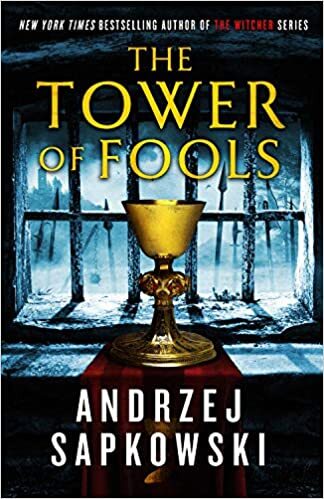
I came upon The Witcher party late, probably upon the announcement of the Netflix series. Too tardy for me to consider picking up the multivolume novel series, and I stubbornly refuse to watch adaptations of anything before reading the source material. But, with elation I soon learned that Orbit would start publishing English translation of a separate series by Andrzej Sapkowski, The Hussite Trilogy.
The first book, The Tower of Fools, appeared in October 2020 with David French translating from the original Polish, and I finally got my opportunity to easily gain introduction to Sapkowski. One of my favorite things I read during that period, I have since bought the follow-up translation, Warriors of God, which I’ll have to devour before the upcoming October 2022 release of the translated final volume, Light Perpetual. In the meantime, I’m beyond due for reviewing The Tower Fools and encouraging readers to get into this fabulous series if they haven’t already.
Given this site is SF in Translation, a note about the translator: David French would already be familiar to Sapkowski fans in the English-speaking world. He has translated several of The Witcher novels to acclaim. I personally have no ability to assess the translation, but I have seen nothing but praise from those who do.
An opening section of the novel establishes the series’ historical setting to the Hussite (Bohemian) Wars of the early 15th Century in the region (Duchy) of Silesia, which is found mostly within modern-day Poland (as well as the Czech Republic and Germany). For readers like myself who are unfamiliar with this historical setting, the opening pages of the novel can be some dense text, akin to reading an actual history book. To really comprehend, appreciate, and enjoy the novel, I found it necessary to slowly crawl through the start alongside a browser tab opened to Wikipedia.
As the novel progressed and I became familiar with general historical details, I had to rely on this less often, and I’d enjoy skeptical or wary readers to bravely carry on. The little bit of slow effort is well worth it. The series is historical fantasy, heavy on the history, and as the historical introduction of setting is passed and the actual story beings, Sapkowski does do an admirable job at relaying relevant historical details through his characters in way that allow modern readers to get their bearings.
The main character, and protagonist of The Tower of Fools (and I assume the entire Hussite Trilogy) is Reinmar of Bielawa, also known as Reynevan. Trained in Prague as a physician, Reynevan also has some secret knowledge of alchemy, and a bit of experience with its magic. However, a young and lustful scoundrel at heart, he has more practice with seducing women, and escaping any resulting complications, than with the medical or magical arts.
One of Reynevan’s sexual dalliances set in motions events, and a journey of, that pits the young man against multiple powerful forces personal and political, secular and religious, from a dishonored family to the Catholic Church and the pre-Protestant offshoot followers of Christian reformer Jan Hus. Though cognizant of the dangers he faces on multiple fronts, and always willing to flee them to preserve life and limb, Reynevan also meets his circumstances with callow and careless disregard. Bordering on blissful buffoonery, he allows the chaotic reality around him storm and surge, carrying him wherever it happens to and only then worrying about responding or dealing with things to continue on.
Sapkowski writes his protagonist as a lovable, blithe fool, a man who we forgive and adore for his ignorant good intentions, despite some moral defects and an inability to make responsible decisions. He is our window into this history (and fantasy) that we can then read with equal parts humor and horror befitting the ruthless historical context. He’s an approach to the absurdity of life, being equally absurd right back at it. Reynevan’s personality (as well as events in the novel) provide its title The Tower of Fools, or Narrenturm in its original. Translating as Fool’s Tower, a Narrenturm refers to physical towers where people with mental disease might be isolated during the Middle Ages. Later in history than the novel is set, an actual Viennese hospital called the Narrenturm opened, which remains standing today.
Reynevan’s journey through the Silesian region from city to countryside, from freedom to the tower, intersect with forces of the Church Inquisition and the Hussites, as he makes new friends and finds old acquaintances to help him along the way. These secondary characters are all constructed as richly as Reynevan himself, a strength in characterization that Sapkowski is apparently well-known within his better-known series as well.
What sets The Hussite Trilogy apart from The Witcher Series most glaringly is not style, but genre and intellectual demands. From what I gather second-hand, the latter series is entertaining and easy reading, full of fantasy elements. The historical details of The Tower of Fools make it relatively more demanding. But the fantasy elements are also far more nuanced and infrequent. I may discover that this focus changes in latter novels of the series, but The Tower of Fools takes a while to make the reality of the magic apparent and to fully introduce non-human intelligences amid the large cast of shifting characters.
The rich historical detail and vivacity of characters within The Tower of Fools made it both an entertaining and educational read. Unless one is really averse to put any work in reading fiction, the only aspect of the novel that I would consider that some might find problem with would be Sapkowski’s treatment of women. Even with historical context to consider, he doesn’t write women well or provide them significant agency or investment in the plot.
Each chapter of the novel begins with a summation of events that occur, but phrased in witty. tongue-in-cheek fashion and flowery vocabulary that leaves some enticing mystery for just what might occur, and how. This architecture, along with its overall balance of genre and blend of dark and humorous overcame any of the defects in the novel for me. Beneath the story and its characters there is also a deeper philosophical discussion going on regarding the nature of humanity. While I may not agree with Sapkowski’s thoughts entirely, I found this another nice layer to the novel that made it well worth consuming with care. I look forward to starting its sequel soon, and hope I’ll get to review the series conclusion along with that second volume later this year on SF in Translation.
June 8, 2022
Out This Month: June
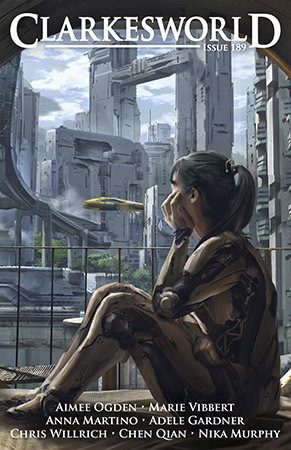 “Inhuman Lovers” by Chen Qian, translated from the Chinese by Carmen Yiling Yan (Clarkesworld Magazine, June 1)
“Inhuman Lovers” by Chen Qian, translated from the Chinese by Carmen Yiling Yan (Clarkesworld Magazine, June 1)
REVIEWS
June 5, 2022
Hebrew SFT: Anthologies
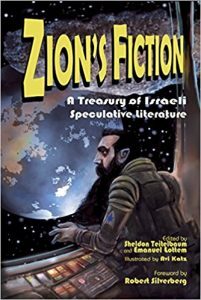 Zion’s Fiction: A Treasury of Israeli Speculative Literature
, eds. Sheldon Teitelbaum and Emanuel Lottem (Mandel-Vilar Press, 2018).
Zion’s Fiction: A Treasury of Israeli Speculative Literature
, eds. Sheldon Teitelbaum and Emanuel Lottem (Mandel-Vilar Press, 2018).“This anthology showcases the best Israeli science fiction and fantasy literature published since the 1980s. The stories included come from Hebrew, Russian, and English-language sources, and include well-known authors such as Shimon Adaf, Pesach (Pavel) Amnuel, Gail Hareven, Savyon Liebrecht, Nava Semel and Lavie Tidhar, as well as a hot-list of newly translated Israeli writers. The book features: an historical and contemporary survey of Israeli science fiction and fantasy literature by the editors; a foreword by revered SF/F writer Robert Silverberg,; an afterword by Dr. Aharon Hauptman, the founding editor of Fantasia 2000, Israel’s seminal SF/F magazine; an author biography for each story included in the volume; and illustrations for each story by award winning American-born Israeli artist, Avi Katz.”
read Teitelbaum’s Introduction
Translated stories from the Hebrew:
“The Slows” (1999 האיטיים) by Gail Hareven (tr. Yaacov Jeffrey Green)
“Burn Alexandria” by Keren Landsman (tr. Emanuel Lottem)
“Hunter of Stars” by Nava Semel (tr. Emanuel Lottem)
“The Believers” by Nir Yaniv (tr. Lavie Tidhar)
“In the Mirror” (במראה 2007) (tr. David Chanoch)
“The Stern-Gerlach Mice” by Mordechai Sasson (tr. Emanuel Lottem)
“A Good Place for the Night” (מקום טוב ללילה 2002) by Savyon Liebrecht (tr. Sondra Silverston)
“A Man’s Dream” (חלום של גבר 2006) by Yael Furman (tr. Nadav Miller Almog)
“My Crappy Autumn” by Nitay Peretz (tr. Emanuel Lottem)
“They Had to Move” by Shimon Adaf (tr. Emanuel Lottem)
Reviews:
Cordasco review
The Times of Israel review
Locus review (2018)
Galaxy’s Edge review (Issue 34, September 2018)
Asimov’s Science Fiction review (May/June 2019)
 More Zion’s Fiction: Wondrous Tales from the Israeli ImagiNation
, edited by Emanuel Lottem and Sheldon Teitelbaum (ZF Partnership, 2021).
More Zion’s Fiction: Wondrous Tales from the Israeli ImagiNation
, edited by Emanuel Lottem and Sheldon Teitelbaum (ZF Partnership, 2021).Forget about start-up nation! Inspired by a science fiction novel – the 1903 proto-Steampunk utopia Old New Land by Theodor Herzl – the State of Israel is the quintessential science fiction nation.
Enter, More Zion’s Fiction: Wondrous Tales from the Israeli ImagiNation, the second of an authoritative three-volume English language collection of Israeli speculative fiction.
Herzl, the Austrian journalist once famously declared: “If you will it, it is no dream.” Herzl’s dream was to create a modern Jewish state in the historical homeland of the Jewish people. Ours is to forge out a literary refuge for the kind of unbridled literary fancy his aspirants, tasked with transforming his science-fictional vision into a hardscrabble reality, could not bring themselves to accomplish. Yours, we hope, will be to help us pry open a long-shuttered window into the dreams and nightmares of a nation quite unlike any other.
Translated stories from the Hebrew:
“Schrödinger’s Gorgon” by Keren Landsman (tr. Emanuel Lottem)
“Five Four Three Two One” by Hila Benyovits-Hoffman (tr. Rehavia Berman)
“Dragon Control” by Rami Shalheveth (tr. Rehavia Berman)
“Me and Nana Go Shopping” by Hamutal Levin (tr. Emanuel Lottem)
“Life in a Movie” by Yivsam Asgad (tr. Emanuel Lottem)
“Dress” by Gail Hareven (tr. Adriana X. Jacobs)
“Composting” by Galit Dahan Carlibach (tr. Ronnie Hope)
“Set in Stone” by Yael Furman (tr. Sarit Shalhevet)
“Askuni-Askuni” by Dafna Feldman (tr. Emanuel Lottem)
“Latte, To Go” by Rotem Baruchin (tr. Rehavia Berman)
Reviews:
Cordasco review
June 3, 2022
Hebrew SFT: Collections
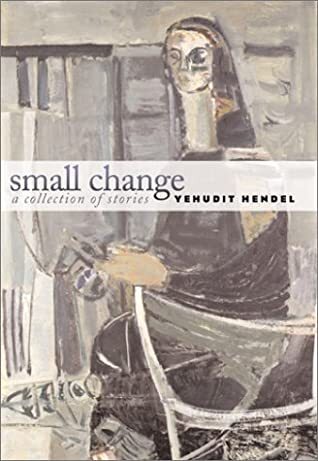
Small Change by Yehudit Hendel, translated by Dalya Bilu, Barbara Harshav, and Marsha Pomerantz (Brandeis University Press, 2002).
In this delicately structured and psychologically rigorous short story collection, Yehudit Hendel maps out a shadow land between life and death, the mundane and the fantastic. These eight stories, which should be read as a cycle, offer variations on the themes of loneliness, family ties, obsession, and regret in contemporary Israel.
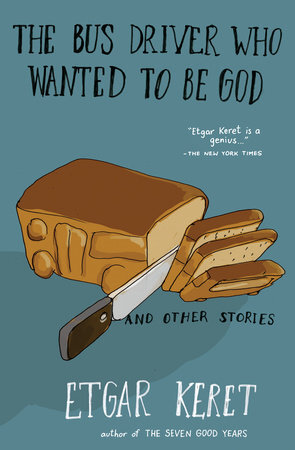 The Bus Driver Who Wanted to be God & Other Stories
by Etgar Keret, translated by Miriam Schlesinger (Toby Press, 2004).
The Bus Driver Who Wanted to be God & Other Stories
by Etgar Keret, translated by Miriam Schlesinger (Toby Press, 2004).
Brief, intense, painfully funny, and shockingly honest, Etgar Keret’s stories are snapshots that illuminate with intelligence and wit the hidden truths of life. As with the best writers of fiction, hilarity and anguish are the twin pillars of his work. Keret covers a remarkable emotional and narrative terrain—from a father’s first lesson to his boy to a standoff between soldiers caught up in the Middle East conflict to a slice of life where nothing much happens.
T
 he Nimrod Flipout
by Etgar Keret, translated by Miriam Schlesinger and Sondra Silverston (FSG, 2006).
he Nimrod Flipout
by Etgar Keret, translated by Miriam Schlesinger and Sondra Silverston (FSG, 2006).
Already featured on This American Life and Selected Shorts and in Zoetrope: All Story and L.A. Weekly, these short stories include a man who finds equal pleasure in his beautiful girlfriend and the fat, soccer-loving lout she turns into after dark; shrinking parents; a case of impotence cured by a pet terrier; and a pessimistic Middle Eastern talking fish. A bestseller in Israel, The Nimrod Flipout is an extraordinary collection from the preeminent Israeli writer of his generation.
Mi
 ssing Kissinger
by Etgar Keret, translated by Miriam Schlesinger and Sondra Silverston (Chatto Windus, 2007).
ssing Kissinger
by Etgar Keret, translated by Miriam Schlesinger and Sondra Silverston (Chatto Windus, 2007).
A magician tries to pull a rabbit out of a hat, but takes out only its head; a guy brings a girl home with him for the first time only to find that his best friend has pissed on his doorstep; a young man graduates from Magician School but soon discovers that he can’t do everything; two drunk students do battle with a pavement and win; someone has a mother and a girlfriend who hate each other’s guts, and they both demand that he gives them the other one’s heart… many of the characters in these stories are waiting for something to change their lives, many of them can’t quite reach ultimate happiness, some of them are sick, some are abandoned, and most have trouble communicating. The unexpected can, and usual does, happen.
Th
 e Girl on the Fridge
by Etgar Keret, translated by Miriam Schlesinger and Sondra Silverston (FSG, 2008).
e Girl on the Fridge
by Etgar Keret, translated by Miriam Schlesinger and Sondra Silverston (FSG, 2008).
A birthday-party magician whose hat tricks end in horror and gore; a girl parented by a major household appliance; the possessor of the lowest IQ in the Mossad—such are the denizens of Etgar Keret’s dark and fertile mind. The Girl on the Fridge contains the best of Keret’s first collections, the ones that made him a household name in Israel and the major discovery of this last decade.
The Love Machine and Other Contraptions
by Nir Yaniv, various translators (infinity plus, 2012).
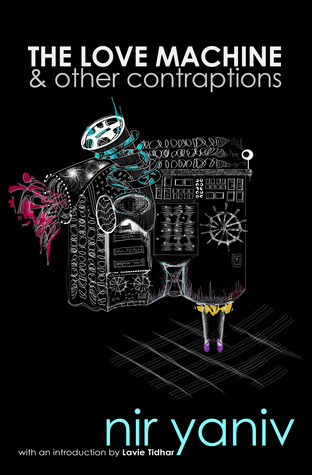
“The following stories represent some of Nir Yaniv’s best work over the last decade or so. Never a prolific writer, he is nevertheless, at his best, a challenging, funny, deeply committed writer, always experimenting, always reinventing, always exploring. I hope you enjoy this collection as much as I did.”- Lavie Tidhar, 2012
Su
 ddenly a Knock on the Door
by Etgar Keret, translated by Miriam Shlesinger, Sondra Silverston and Nathan Englander (Vintage, 2012).
ddenly a Knock on the Door
by Etgar Keret, translated by Miriam Shlesinger, Sondra Silverston and Nathan Englander (Vintage, 2012).
A man barges into a writer’s house and, holding a gun to his head, demands that he tell him a story, something to take him away from the real world. A pathological liar discovers one day that all the lies he tells come true. A young woman finds a zip in her boyfriend’s mouth, and when she opens it he unfolds to reveal a completely different man inside. Suddenly, a Knock on the Door is at once Keret’s most mature and most playful work yet, and establishes him as one of the great international writers of our time.
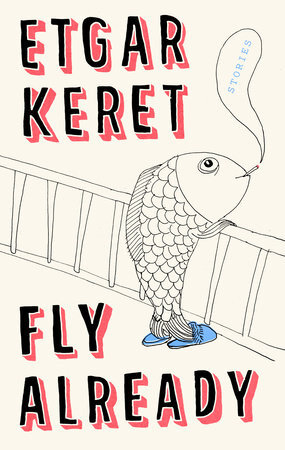 Fly Already
by Etgar Keret, translated by Sondra Silverston, Nathan Englander, Jessica Cohen, Miriam Shlesinger, and Yardenne Greenspan (Riverhead, 2019).
Fly Already
by Etgar Keret, translated by Sondra Silverston, Nathan Englander, Jessica Cohen, Miriam Shlesinger, and Yardenne Greenspan (Riverhead, 2019).
June 2, 2022
Hebrew SFT: Novels (Part 2)

 Isra Isle
(2005) by Nava Semel, translated by Jessica Cohen (Mandel Vilar Press, 2016).
Isra Isle
(2005) by Nava Semel, translated by Jessica Cohen (Mandel Vilar Press, 2016).
“So what are we Jews doing in the chaotic Middle East when we could easily have been living peacefully in our state “Isra Isle”, near the Niagara Falls in America? This isn’t sheer fantasy. It could have happened! Behind Nava Semel’s novel lies a true historical episode. In 1825, Mordecai Manuel Noah, an American journalist, playwright and diplomat, bought Grand Island, downriver from the Niagara Falls, as a place of refuge for his people. But no Jew answered his call. Noah became a footnote in history and the option for a Jewish state in North America was washed away to oblivion by the tide of Zionism. Nava Semel has created an alternative history, a “what if” option. She takes upon herself a complex and challenging task, and stimulates new thinking about questions of memory, Jewish/Israeli identity, the attitude to minorities, women in top political positions, and the place of cultural heritage.”

 The Ruined House
by Ruby Namdar, translated by Hillel Halkin (Harper, 2017).
The Ruined House
by Ruby Namdar, translated by Hillel Halkin (Harper, 2017).
“Andrew P. Cohen, a professor of comparative culture at New York University, is at the zenith of his life. Adored by his classes and published in prestigious literary magazines, he is about to receive a coveted promotion—the crowning achievement of an enviable career. He is on excellent terms with Linda, his ex-wife, and his two grown children admire and adore him. His girlfriend, Ann Lee, a former student half his age, offers lively companionship. A man of elevated taste, education, and culture, he is a model of urbanity and success.But the manicured surface of his world begins to crack when he is visited by a series of strange and inexplicable visions involving an ancient religious ritual that will upend his comfortable life.”

 The Coincidence Makers
(2011) by Yoav Blum, translated by Ira Moskowitz (St. Martin’s Press, 2018).
The Coincidence Makers
(2011) by Yoav Blum, translated by Ira Moskowitz (St. Martin’s Press, 2018).
“What if the drink you just spilled, the train you just missed, or the lottery ticket you just found was not just a random occurrence? What if it’s all part of a bigger plan? What if there’s no such thing as a chance encounter? What if there are people we don’t know determining our destiny? And what if they are even planning the fate of the world?
Enter the Coincidence Makers—Guy, Emily, and Eric—three seemingly ordinary people who work for a secret organization devoted to creating and carrying out coincidences. What the rest of the world sees as random occurrences, are, in fact, carefully orchestrated events designed to spark significant changes in the lives of their targets—scientists on the brink of breakthroughs, struggling artists starved for inspiration, loves to be, or just plain people like you and me…
When an assignment of the highest level is slipped under Guy’s door one night, he knows it will be the most difficult and dangerous coincidence he’s ever had to fulfill. But not even a coincidence maker can see how this assignment is about to change all their lives and teach them the true nature of fate, free will, and the real meaning of love.”

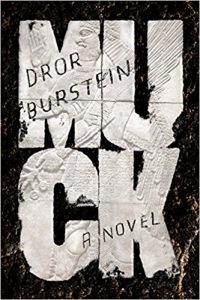 Muck
(2016) by Dror Burstein, translated by Gabriel Levin (FSG, 2018).
Muck
(2016) by Dror Burstein, translated by Gabriel Levin (FSG, 2018).
“The hero of Burstein’s sixth novel is the prophet Jeremiah, a young poet who starts predicting a catastrophe. In the Jerusalem streets where he wanders, the citizens travel on the light-rail train and talk on cell phones, but the Temple is standing, King Jehoiakim lives in an ugly palace, and Jeremiah’s words demoralize the people. He warns that Nebuchadnezzar’s Babylonian army is going to surround the corrupted city, destroy it and send its population into exile. But no one listens, even when Babylonian helicopters and tanks are on the city outskirts. Jehoiakim then commits suicide and his crown passes to his son Jehoiachin, a talented pianist who is tricked into giving up his musical career in Vienna and flying back home. But his reign is short and his uncle, Zedekiah, takes power. Zedekiah is a successful poet who sports tattoos and whose poems appear in prestigious journals. He is also a childhood friend of Jeremiah’s. But now that he is king, Zedekiah sees Jeremiah as a traitor and orders him to be thrown into a pit of muck. Fortunately, a pack of dogs, headed by a talking dog, saves the tormented prophet from drowning. Muck is a complex, brilliant and daring novel. Partly an attempt to rewrite the story of Jeremiah in modern dress, it may also be a chilling prophesy for contemporary Jerusalem. It invites the reader to re-assess the relevance of the biblical text today and to view the cyclical nature of history.”

 The Heart of the Circle
(2018) by Keren Landsman, translated by Daniella Zamir (Angry Robot, 2019).
The Heart of the Circle
(2018) by Keren Landsman, translated by Daniella Zamir (Angry Robot, 2019).
“Throughout human history there have always been sorcerers, once idolised and now exploited for their powers. In Israel, the Sons of Simeon, a group of political extremists, persecute sorcerers while the government turns a blind eye. After a march for equal rights ends in brutal murder, empath, moodifier and reluctant waiter Reed becomes the next target. While his sorcerous and normie friends seek out his future killers, Reed complicates everything by falling hopelessly in love. As the battle for survival grows ever more personal, can Reed protect himself and his friends as the Sons of Simeon close in around them?”
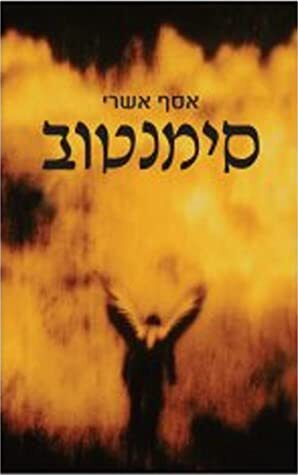
 Simantov
by Asaf Ashery, translated by Marganit Weinberger-Rotman (Angry Robot Books, 2020).
Simantov
by Asaf Ashery, translated by Marganit Weinberger-Rotman (Angry Robot Books, 2020).
Detectives Simantov and Bitton, along with their team of mystic agents, try to make sense of the weird crime scenes and even weirder forensic findings. The victims are seemingly unconnected and the only clues to their disappearances are the small objects they leave behind; a whip, a feather, a lock of hair… Together with Mazzy’s instincts and Yariv’s stubbornness, they realise that these abductions signal the start of an apocalypse – a war between opposing hosts of angels, the daughters of Lilith and the Nephilim. The battle for access to heaven is underway and humans are caught in the middle. But strong as they may be, angels will always underestimate the power and weight in human free will.
Hebrew SFT: Novels (Part 1)
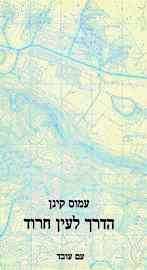 Th
Th
 e Road to Ein Harod
by Amos Kenan, translated from the Hebrew into the French by ?, translated from the French by Anselm Hollo (Grove Press, 1988).
e Road to Ein Harod
by Amos Kenan, translated from the Hebrew into the French by ?, translated from the French by Anselm Hollo (Grove Press, 1988).
“In the dreamlike reality of The Road to Ein Harod, Israel is in the grip of a civil war following a military coup. Having killed an intruder, the narrator Rafi flees for his life towards Kibbutz Ein Harod in the Jezreel Valley. On the way he meets the Arab Mahmoud, who becomes the only person he can trust. The flight to Ein Harod becomes the road of ultimate understanding…”

 Dolly City
(1992) by Orly Castel-Bloom, translated by Dalya Bilu (Loki Books, 1997).
Dolly City
(1992) by Orly Castel-Bloom, translated by Dalya Bilu (Loki Books, 1997).
“Dolly, the novel’s heroine, is afflicted with a disease that does not appear in the medical textbooks: she is a chronic sufferer from attacks of infinite possibilities. The novel is propelled by the author’s wild imagination let loose, but what seems at first to be breathtaking madness turns out to contain pure logic…As in her earlier fiction, Castel-Bloom writes about Tel Aviv, its squalor, its vitality, its ecological anarchy, and about the violence of modern urban life. Through her pungent style, her scenes of extraordinary plasticity, with hard, sharp wording and plenty of black humor, Castel-Bloom evokes the anxiety of a self-destructive world…”
Dolly City has been included in the UNESCO Collection of Representative Works.
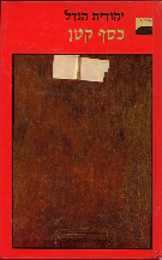 Small Change
(1988) by Yehudit Hendel, various translators (Brandeis University Press,
Small Change
(1988) by Yehudit Hendel, various translators (Brandeis University Press,
 2002).
2002).
“These six stories are variations on the theme of life and death, the duality of existence. In “Low, Close to the Floor,” the narrator portrays a man who has been twice widowed. The old man tearfully wonders beside which of his wives he should be buried. The story “My Friend B.’s Feast” concerns a woman dying of cancer. She has two hours’ leave from the hospital to enjoy her “last meal.” At the heart of the story “Small Change” are the strange and obsessive relationships within a family. Taken together, the six stories create a detailed psychological and physical confrontation with death.”
 Human Parts
(1997) by Orly Castel-Bloom, translated by Dalya Bilu (David R. Godine,
Human Parts
(1997) by Orly Castel-Bloom, translated by Dalya Bilu (David R. Godine,
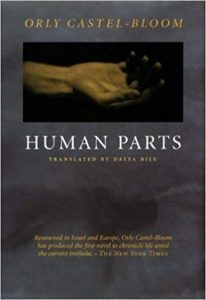 2003).
2003).
“On the one hand, this is a topical novel, dealing with the painful realities of Israeli life and the instability and anxiety which characterize these times; on the other hand, it is a novel about the universal human plight and existential fears…”
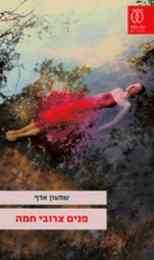 Su
Su
 nburnt Faces
by Shimon Adaf, translated by Margalit Rodgers and Anthony Berris (PS Publishing, 2013).
nburnt Faces
by Shimon Adaf, translated by Margalit Rodgers and Anthony Berris (PS Publishing, 2013).
“When Flora Elhayani is twelve years old, God appears to her through the television and suddenly she can speak again, after being mute for two months. She then changes her name to Ori, and outwardly, her life in the desert town of Netivot continues as before. Inwardly, however, she does not know how to deal with the revelation and her attempt to understand it forces her towards maturity. We meet Ori again twenty years later in Tel Aviv, married to a successful man and the mother of a little girl. In the meantime, she has a become a well-known writer for young adults, who focuses on various Wonderland themes. And then a second revelation, very different from the first, rattles the foundations of her life and puts all in doubt.
With surprising realism, Sunburnt Faces examines the nature of revelation in a world so detached from God that any communication between him and man only takes place in situations of error and doubt. But will the social and political nature of this world allow Ori to find the certainty without which she cannot live?”

 The World of the End
by Ofir Touché Gafla, translated by Mitch Ginsburg (Tor Books, 2013).
The World of the End
by Ofir Touché Gafla, translated by Mitch Ginsburg (Tor Books, 2013).
As an epilogist, Ben Mendelssohn appreciates an unexpected ending. But when that denouement is the untimely demise of his beloved wife, Ben is incapable of coping. Marian was more than his life partner; she was the fiber that held together all that he is. And Ben is willing to do anything, even enter the unknown beyond, if it means a chance to be with her again. One bullet to the brain later, Ben is in the Other World, where he discovers a vast and curiously secular existence utterly unlike anything he could have imagined: a realm of sprawling cities where the deceased of every age live an eternal second life, and where forests of family trees are tended by mysterious humans who never lived in the previous world. But Ben cannot find Marian.
Desperate for a reunion, he enlists an unconventional afterlife investigator to track her down, little knowing that his search is entangled in events that continue to unfold in the world of the living. It is a search that confronts Ben with one heart-rending shock after another; with the best and worst of human nature; with the resilience and fragility of love; and with truths that will haunt him through eternity.
review at The Complete Review
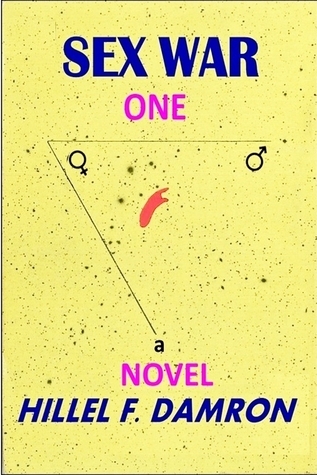 Sex War One
by Hillel Damron, translated by the author (HillelBridge Publications, 2014).
Sex War One
by Hillel Damron, translated by the author (HillelBridge Publications, 2014).
“Following a nuclear holocaust, the only survivals of the human race exist in a retro-style, yet technically advanced underground-colony. Males and females live in complete harmony and equality, but traditional marriages and families no longer exist, replaced by communal living with a fixed amount of babies being born periodically in a sophisticated birth-laboratory. Love is dead – or so they assume – substituted by an abundant of unemotional, free-for-all sex.
But then something goes terribly wrong: a different female baby is mistakenly born in the lab, with a different shape and color from the regular, normal children. This catalyst induces two unforeseen, starkly opposing consequences: the return of love and affection on the one hand, and the dictatorial rule of women over men on the other. Ultimately, the oppression of the males leads to a revolt, and eventually to a full-scale war between the sexes, with the survival of the human race again at stake.”





